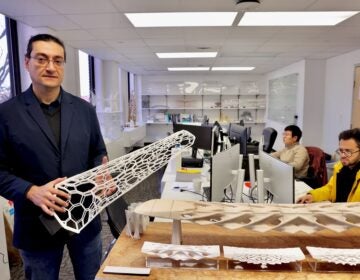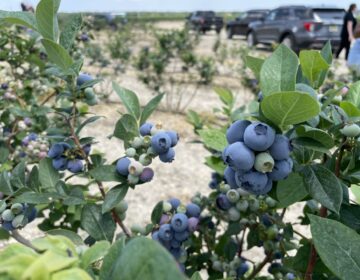Is kelp the new kale? It was supposed to be
Seaweed farming is still a promising idea that benefits the environment, but doing it at scale requires more work.
Listen 07:03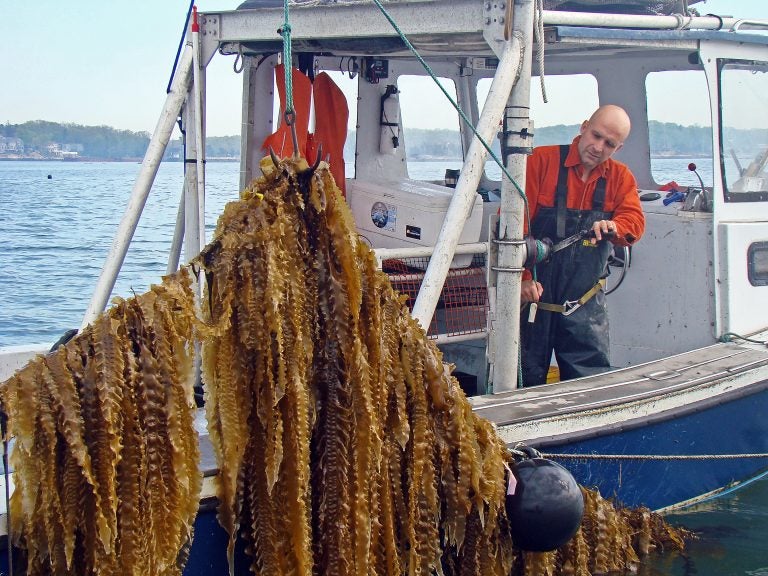
Bren Smith lifts a line of kelp on his farm. Photo provided by GreenWave
A few years ago, many news stories announced that “kelp is the new kale.” That the global seaweed harvest is worth more than lemons and limes. That it’s the “next great food craze,” and that it will be “everywhere by the next decade.”
Kelp is a type of seaweed that grows in large underwater forests, and looks a little like green lasagna noodles with curly edges.
Seaweed farming has a lot going for it. Seaweed doesn’t require any fertilizer and can actually be used as fertilizer. It helps fight climate change and cleans up ocean water by taking in nitrogen compounds. But now, the growing industry in the U.S. has to build infrastructure to support it, and change people’s tastes on a larger scale too.
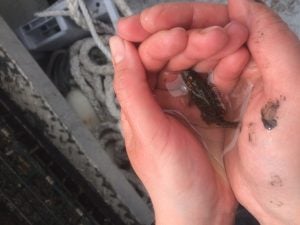
Bren Smith is a leading advocate for what he calls restorative ocean farming — growing seaweed alongside shellfish like mussels and oysters, which absorb carbon and nitrogen, protect shorelines from storm surges, and rebuild marine ecosystems. He co-founded a nonprofit called GreenWave to promote the movement and train aspiring farmers.
“The momentum’s been unbelievable … we have requests to start farms in every coastal state in North America, 20 countries around the world,” Smith said.
Smith’s farm is just off the coast of Connecticut, on the Long Island Sound. There are now farms in Connecticut, Maine, Massachusetts, and other states in New England, with more getting started in California and the Pacific Northwest.
“We’re growing, and people are eating it, Smith said. “This isn’t like a cute little Brooklyn bee farm project creating nice little bottles of honey at the farmers market … there are hundreds of thousands of pounds being produced and sold at this point.”
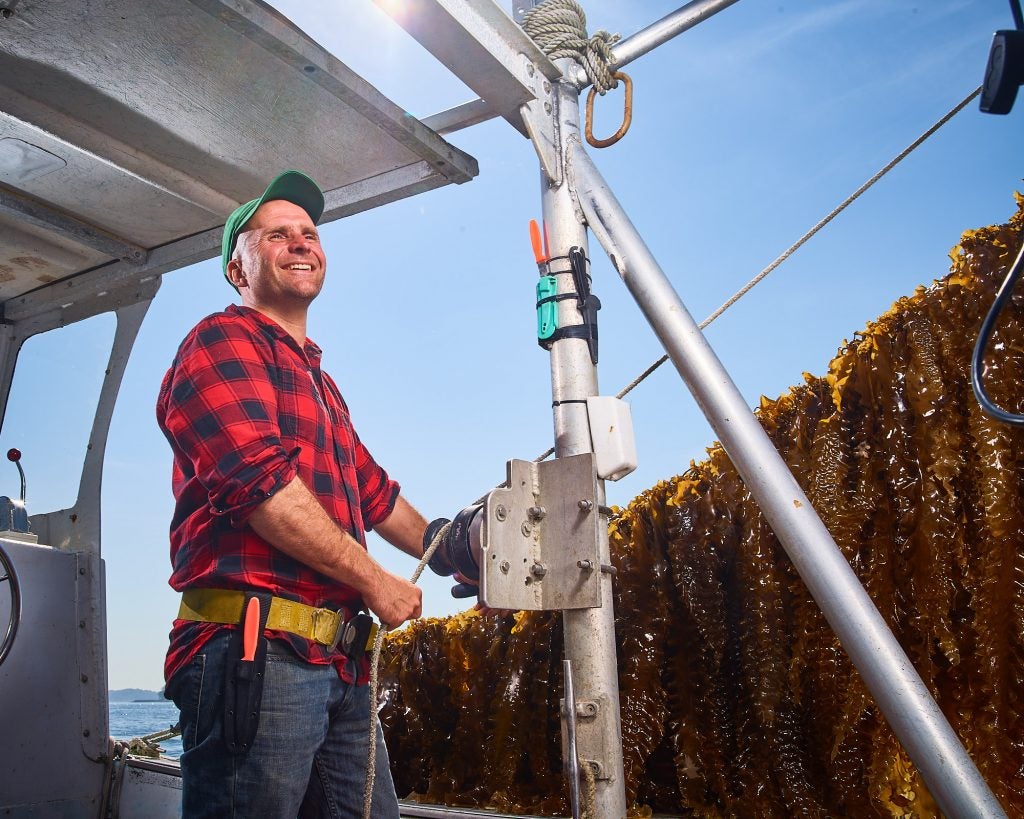
However, some industry specialists say growing seaweed has become perhaps too popular. Anoushka Concepcion is an assistant extension educator with the Connecticut Sea Grant, which means she works with seafood producers and researchers and answers questions about the latest technology and trends.
“The idea sort of took off before all the practical challenges can be addressed,” Concepcion said. “Farmers are finding it difficult now just to get rid of their seaweed. They can’t get rid of it.”
Usually, she says, the seafood business works like this: oysters and clams are sold right off a boat to a dealer, who sells them to restaurants.
“Dealers are not buying seaweed yet, because there’s no established market on their end,” Concepcion said.
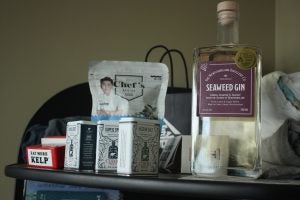
Smith, GreenWave’s co-founder, said all the farmers who are a part of that network have no problem selling their seaweed, but he agrees with Concepcion about another obstacle — the need for processing facilities.
Smith’s farm grows kelp, and he explains it has a shelf life of half an hour and needs to be blanched quickly after it leaves the water to stabilize it, which is expensive.
It’s fine to do that on a small scale, but once you get more and more farmers growing kelp, you need big buildings with giant tubs of hot water and freezers to process it and keep it safe to eat.
Smith said Connecticut doesn’t have those yet, so if a lot more people start growing more seaweed, that’s a problem.
“In a way, expectations have been set way too high,” Smith said. “This is an exciting, scalable, replicable thing that can be a true climate solution, but it’s going to be really hard work.”
Still, he added, climate change is a big issue, and for this part of the solution to work, the industry needs all hands on deck.
“It’s not about growing slow and small because we only have 30 years to address the climate crisis — that would have been great in the 1950s.”
Smith said the seaweed business is past the startup phase and now needs to build infrastructure and grow market demand by changing people’s tastes on a larger scale.
The latter could take some time, said Jet Tila, a celebrity chef who specializes in pan-Asian cuisine. He has used seaweed in many Japanese and Chinese dishes in his restaurants, but when asked to make it the star of a plate in a challenge on the show “Iron Chef,” he found it difficult.
“Seaweed is not a center-of-the-plate ingredient traditionally,” Tila said. “It lacks fat. It has savoriness, [but] it lacks the protein feeling from meat, so it was really difficult to pair it into something to try and make it the star of the show.”

He works more in large-scale corporate food service, and said seaweed will become mainstream if it becomes the center of the plate in those settings.
“You’re still in the early-adopting phase, I don’t think we’re even close to the middle,” Tila said. “It’s going to be, in my opinion, quite a few years.”
Rob Buscher, president of the Japanese American Citizens League’s Philadelphia chapter, cooks often with several types of seaweed because it’s a big part of Japanese cuisine. He said that he’s happy to see seaweed becoming mainstream, but that he also feels conflicted because Japanese culture was once stigmatized in the U.S.
“I am not alone when saying this because I think for Japanese Americans, I’m in my early 30s, I grew up when Japanese video games, Nintendo, Pokémon, when all of this was first really becoming mainstream here in the United States, but it was only cool when the non-Japanese Americans were doing it.”
WHYY is your source for fact-based, in-depth journalism and information. As a nonprofit organization, we rely on financial support from readers like you. Please give today.





